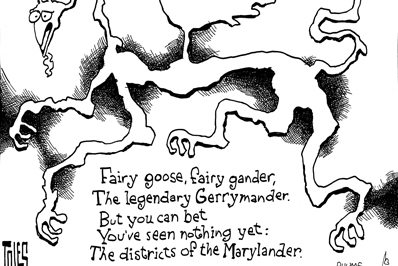By John Pickerill
After the next census in 2020, the Indiana General Assembly will once again take on the task of redrawing the state’s election districts. Because Republicans hold a super-majority in both the House and Senate in Indianapolis, there is a lot of concern they’ll game the system and draw the lines to defend their super-majority at the expense of everyone else. Some have even called for creating a non-partisan “Redistricting Commission” to draw the lines instead of letting the General Assembly do it. That’s a nice thought, but good luck on finding enough non-partisan people in this day and age to appoint to that commission.
But there might be a way out of this dilemma. A wise man once said, “If you want a new idea, read an old book.” What if we followed the model of the U.S. Constitution in how its House and Senate are set up? The U.S. House districts are redrawn every ten years by population, yes. But the U.S. Senate always stays the same (each state gets two Senators no matter how big or small the state).
In Indiana, we have 100 state representatives and 50 senators. There are 92 counties in Indiana. Why not change the Indiana House to 92 state representatives and assign one to each county? You would never have to redraw House districts again. Oh, sure, you’d still have to redraw the Senate districts, but it would be a big improvement over the system we have today.
It would have the added bonus of rebalancing power in the statehouse. More and more each year, big-city interests dominate over rural interests. But this fixes that. With a House composed of one representative from each county, a small rural county has an equal vote as Marion County, Allen County (Ft Wayne), Vanderburgh County (Evansville), or Lake County (Gary/Hammond). So any proposed legislation would have to pass both the Senate (based on population) and the House (where each county gets one representative no matter how big or small the county). City interests and rural interests would finally be balanced.
But back to the problem at hand, this idea would prevent one political party from completely dominating how election districts are redrawn. And all without the added complexity of introducing a “non-partisan” Redistricting Commission (that a blind man can see won’t be appointed by non-partisans or made up of non-partisans).

